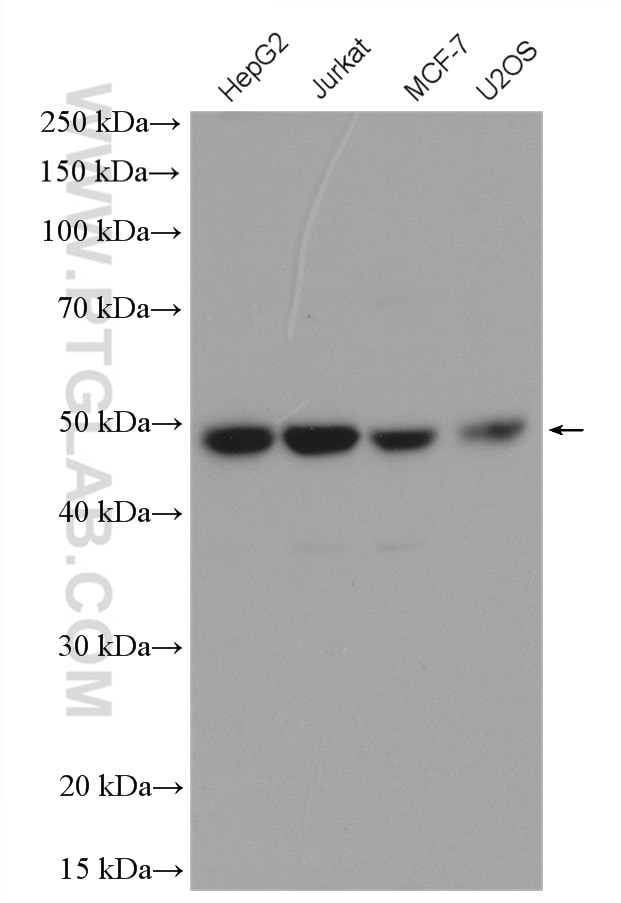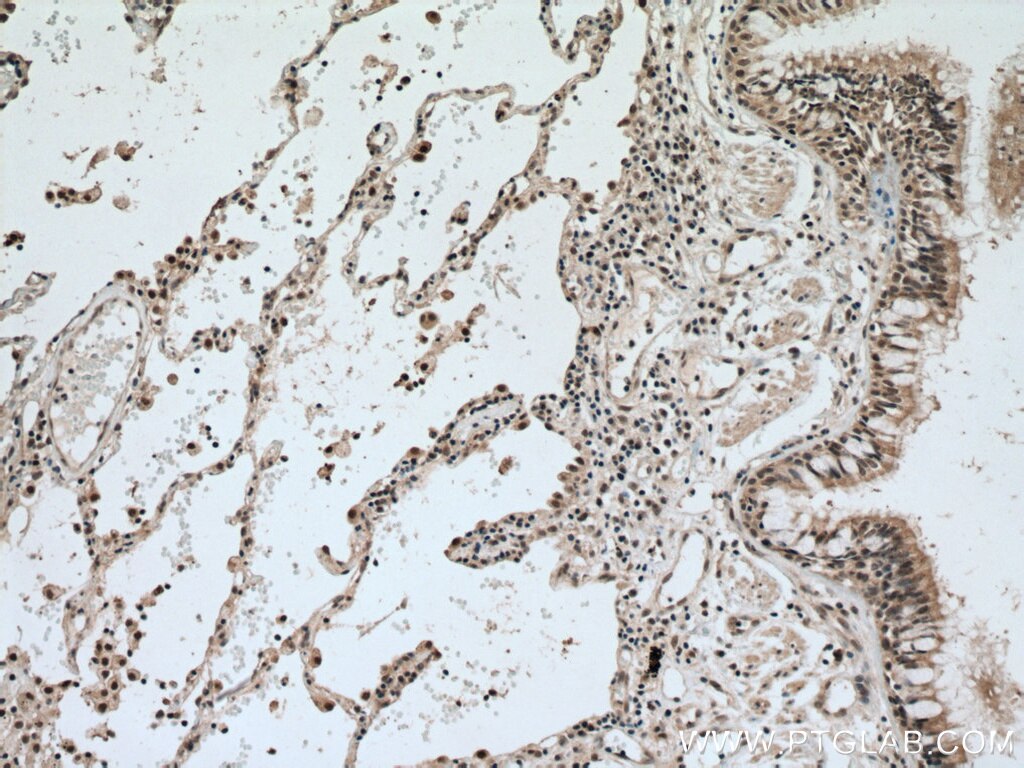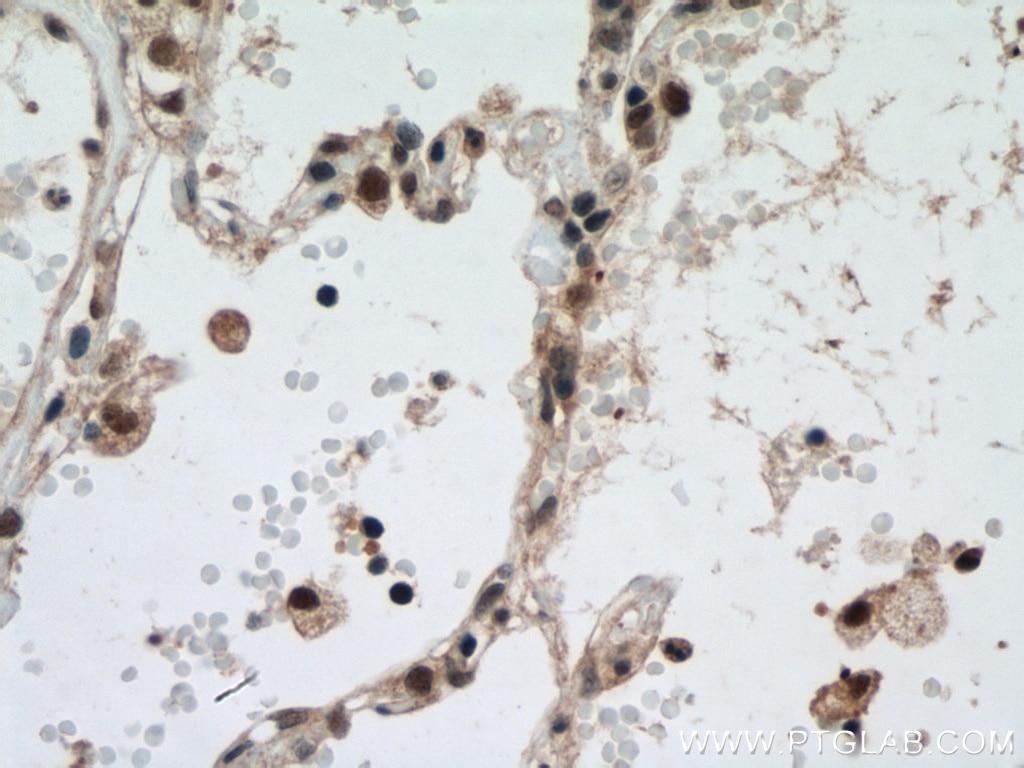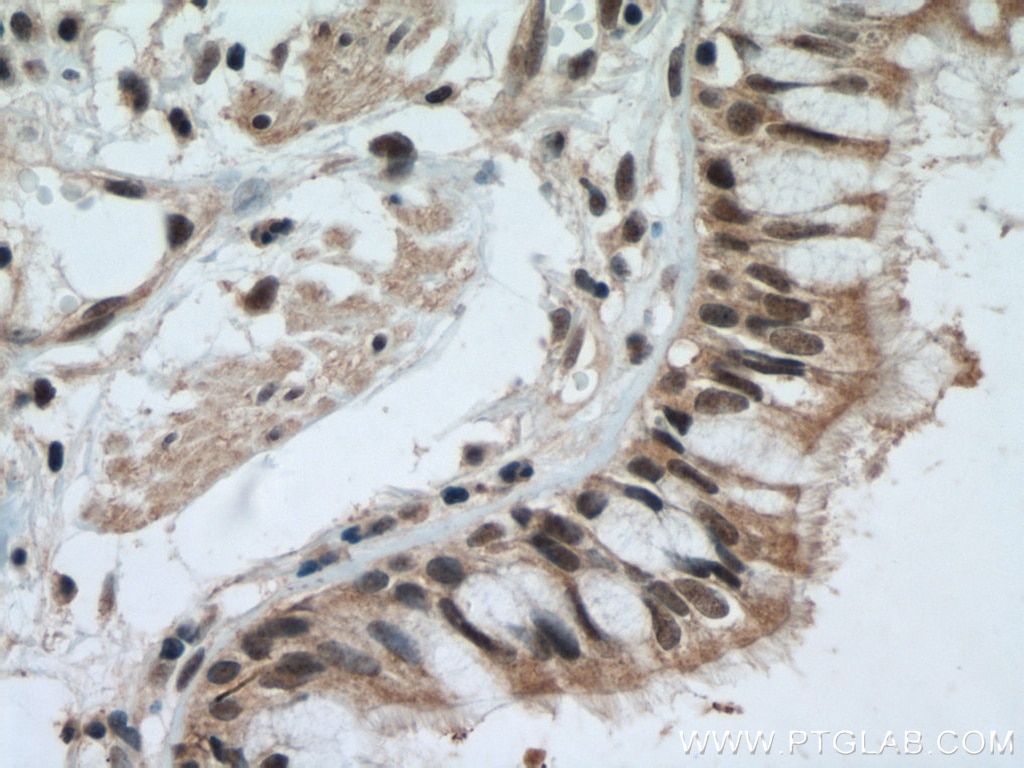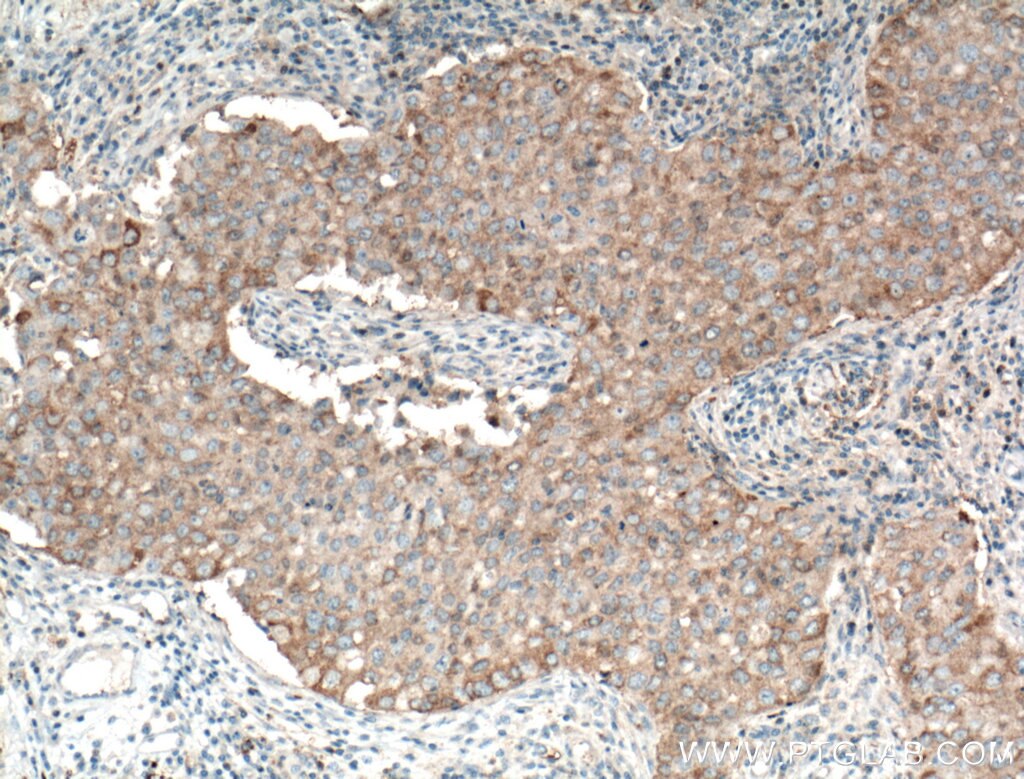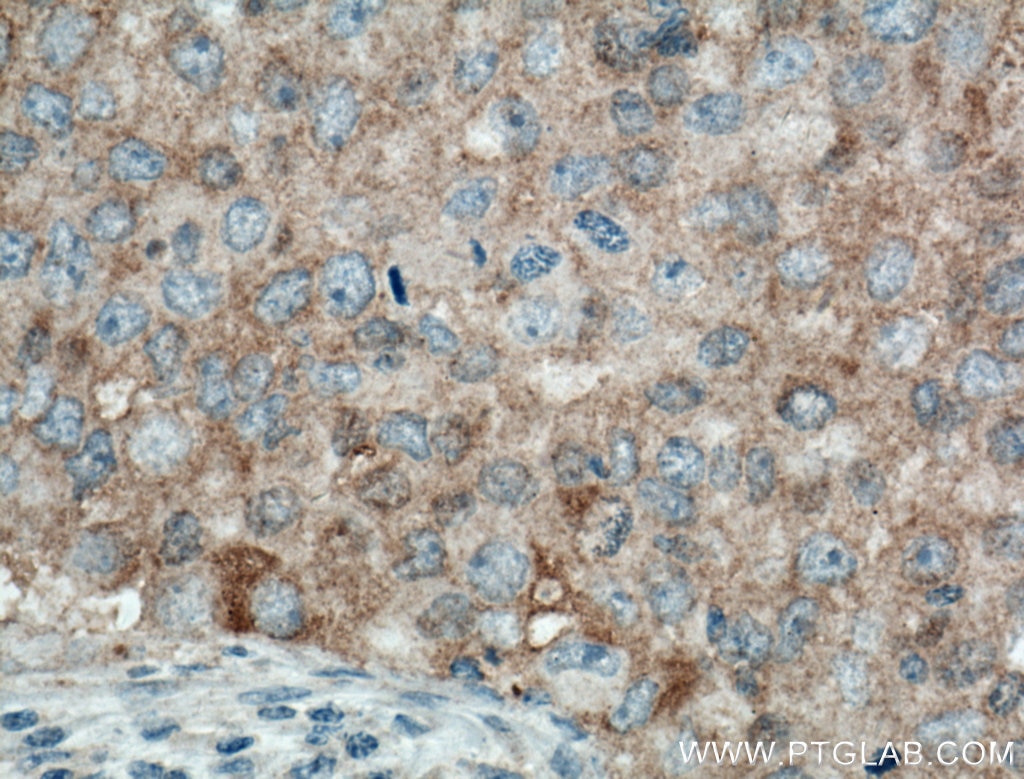Anticorps Polyclonal de lapin anti-MAEA
MAEA Polyclonal Antibody for WB, IHC, ELISA
Hôte / Isotype
Lapin / IgG
Réactivité testée
Humain
Applications
WB, IHC, ELISA
Conjugaison
Non conjugué
N° de cat : 15238-1-AP
Synonymes
Galerie de données de validation
Applications testées
| Résultats positifs en WB | cellules HepG2, cellules Jurkat, cellules MCF-7, cellules U2OS |
| Résultats positifs en IHC | tissu de cancer du poumon humain, tissu de cancer du sein humain il est suggéré de démasquer l'antigène avec un tampon de TE buffer pH 9.0; (*) À défaut, 'le démasquage de l'antigène peut être 'effectué avec un tampon citrate pH 6,0. |
Dilution recommandée
| Application | Dilution |
|---|---|
| Western Blot (WB) | WB : 1:500-1:2000 |
| Immunohistochimie (IHC) | IHC : 1:50-1:500 |
| It is recommended that this reagent should be titrated in each testing system to obtain optimal results. | |
| Sample-dependent, check data in validation data gallery | |
Applications publiées
| WB | See 1 publications below |
Informations sur le produit
15238-1-AP cible MAEA dans les applications de WB, IHC, ELISA et montre une réactivité avec des échantillons Humain
| Réactivité | Humain |
| Réactivité citée | Humain |
| Hôte / Isotype | Lapin / IgG |
| Clonalité | Polyclonal |
| Type | Anticorps |
| Immunogène | MAEA Protéine recombinante Ag7365 |
| Nom complet | macrophage erythroblast attacher |
| Masse moléculaire calculée | 45 kDa |
| Poids moléculaire observé | 42-45 kDa |
| Numéro d’acquisition GenBank | BC001225 |
| Symbole du gène | MAEA |
| Identification du gène (NCBI) | 10296 |
| Conjugaison | Non conjugué |
| Forme | Liquide |
| Méthode de purification | Purification par affinité contre l'antigène |
| Tampon de stockage | PBS avec azoture de sodium à 0,02 % et glycérol à 50 % pH 7,3 |
| Conditions de stockage | Stocker à -20°C. Stable pendant un an après l'expédition. L'aliquotage n'est pas nécessaire pour le stockage à -20oC Les 20ul contiennent 0,1% de BSA. |
Informations générales
MAEA(macrophage erythroblast attacher) is a core component of the CTLH E3 ubiquitin-protein ligase complex. MAEA is required for normal cell proliferation and plays a role in erythroblast enucleation during erythrocyte maturation and in the development of mature macrophages. N-terminus MAEA and full-length MAEA are mostly expressed in nuclear and can be detected at low level in the cytoplasm of some cells, while C-terminus MAEA can be detected in the cytoplasm and nucleoli within the nucleus. MAEA mediates the attachment of erythroid cell to mature macrophages which can inhibit erythroid cell apoptosis. The expression of MAEA may be associated with the type 2 diabetes mellitus.(PubMed: 28955747, 24143168, 29911972, 29911972, 30674470, 9763581).
Protocole
| Product Specific Protocols | |
|---|---|
| WB protocol for MAEA antibody 15238-1-AP | Download protocol |
| IHC protocol for MAEA antibody 15238-1-AP | Download protocol |
| Standard Protocols | |
|---|---|
| Click here to view our Standard Protocols |
Publications
| Species | Application | Title |
|---|---|---|
iScience Genome-wide CRISPR-Cas9 screen analyzed by SLIDER identifies network of repressor complexes that regulate TRIM24 |
